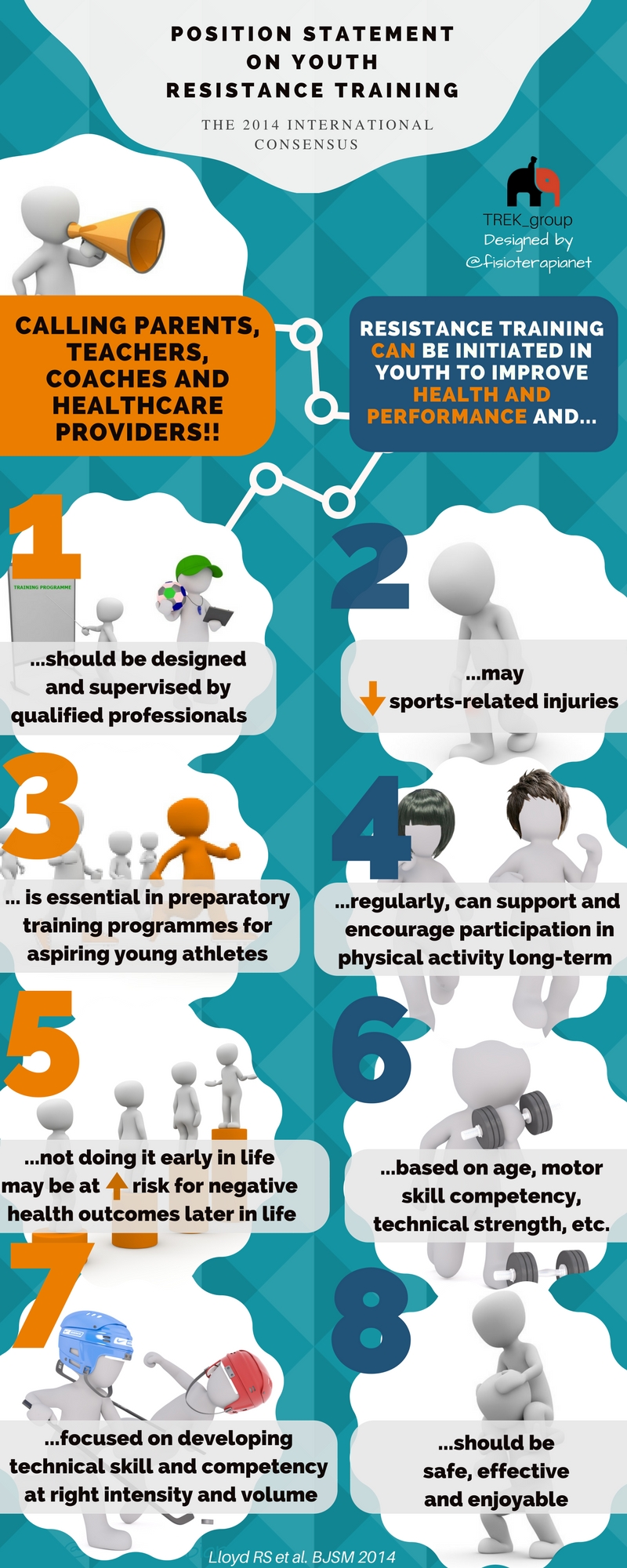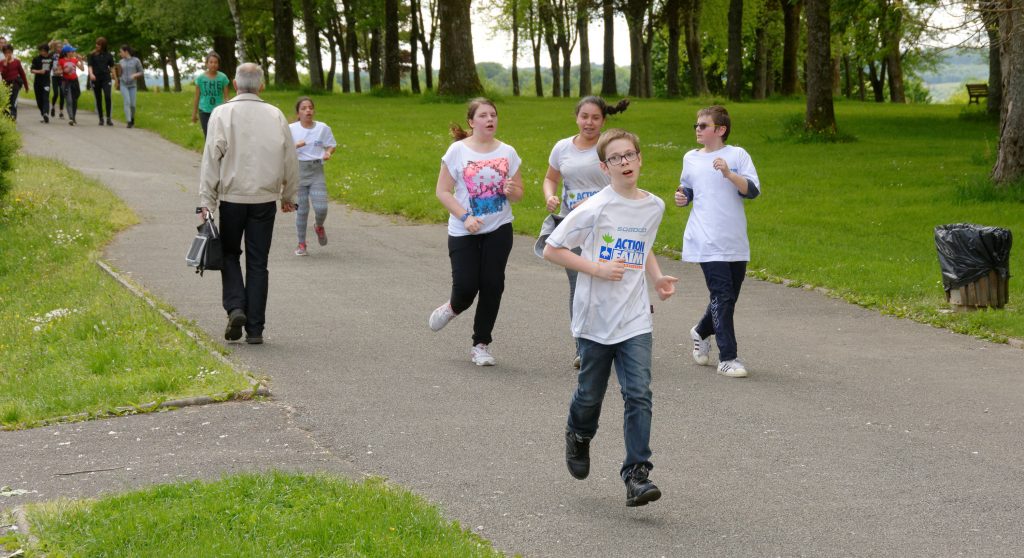Should adolescents do resistance training?
Exercise, and physical activity are important components for a healthy lifestyle in children and adolescents. Strength training is important for musculoskeletal health and fitness, and is endorsed by many international organisations, including the World Health Organisation.
Weight bearing exercises, including resistance training are particularly important for bone health. As up to 90% of peak bone mass is achieved by 18-20 years, adolescence is an extremely important period for promoting lifelong bone health. Mechanical loading of bone is important, and adolescents weight lifters have higher bone mineral density and bone mineral content than age-matched controls. There is increasing evidence that muscular strength and fitness in youth are associated with a range of other positive health benefits, including improved body composition, cardiovascular health, and increased self-esteem.
In addition to this, kids and adolescents are responsive to training, and intervening in this period can improve overall strength, endurance, motor skill, and sports-related performance.
What are the risks?
Physiotherapists, and strength and conditioning coaches are often questioned about the safety and risk associated with strength training in kids and adolescents. Such concerns stem from myths that strength training will stunt children’s growth. Contrary to popular belief, there is no scientific evidence that strength training programmes have any negative effect on growth and development.
As with any sport or activity, participation is associated with some risk of injury, but this is no higher than in any sports, and many injuries are preventable by appropriate programme design, supervision and load management. In fact, there is increasing evidence that engaging in strength training is an important prophylactic component of injury prevention programmes.
When we talk about resistance training, it doesn’t just refer to lifting heavy weights in a gym. It includes various modalities, including body weight exercises, building fundamental movement skills and preparing youth for sports sports participation.
When to start?
Professionals will often be asked the question ‘how young is too young?’.
The reality is that, so long as kids are able to understand and follow directions and correctly execute the desired exercises, there is no reason they can’t participate in an age appropriate (supervised) strength training programme. Faigenbaum and colleagues initiated a 15minute programme in physical education classes of youth as young as seven years old, which was composed of body weight and balance exercises. Overall eight weeks resulted in improved increased strength, power, speed and aerobic performance in these young kids.
So how to prescribe?
As with any exercise prescription, the programme is largely dependant on the individual, the motor skill competency, developmental age, resistance training experience and personal goals. A well designed programme should aim to improve muscular fitness and increase resistance training skill and quality of movement. To do this, it is recommended to begin with low resistance exercises, when initiating a resistance training programme, in order to improve exercise form and skill.
Once youth are technically competent, they can progress to a more structured loading programme, which optimises strength and performance adaptations.
ACSM recommends that dosage should be similar to a novice:
- 60-80% 1RM, 8-12 reps, 1-3 sets, 2 days/ week

Training in Adolescent Females

Infographic: ylmsportscience.com
Full Article click here
Key References
- Faigenbaum AD, Kraemer WJ, Blimkie CJ, Jeffreys I, Micheli LJ, Nitka M, Rowland TW (2009) Youth resistance training: updated position statement paper from the national strength and conditioning association. Journal of strength and conditioning research / National Strength & Conditioning Association 23:S60-79.
- Faigenbaum AD, Lloyd RS, MacDonald J, Myer GD (2015) Citius, Altius, Fortius: beneficial effects of resistance training for young athletes. British journal of sports medicine 10.1136/bjsports-2015-094621.
- Faigenbaum AD, Myer GD, Farrell A, Radler T, Fabiano M, Kang J, Ratamess N, Khoury J, Hewett TE (2014) Integrative neuromuscular training and sex-specific fitness performance in 7-year-old children: an exploratory investigation. J Athl Train 49:145-153.
- Lloyd RS, Faigenbaum AD, Stone MH, Oliver JL, Jeffreys I, Moody JA, Brewer C, Pierce KC, McCambridge TM, Howard R, Herrington L, Hainline B, Micheli LJ, Jaques R, Kraemer WJ, McBride MG, Best TM, Chu DA, Alvar BA, Myer GD (2014) Position statement on youth resistance training: the 2014 International Consensus. British journal of sports medicine 48:498-505.
- Smith JJ, Eather N, Morgan PJ, Plotnikoff RC, Faigenbaum AD, Lubans DR (2014) The health benefits of muscular fitness for children and adolescents: a systematic review and meta-analysis. Sports medicine (Auckland, NZ) 44:1209-1223.
